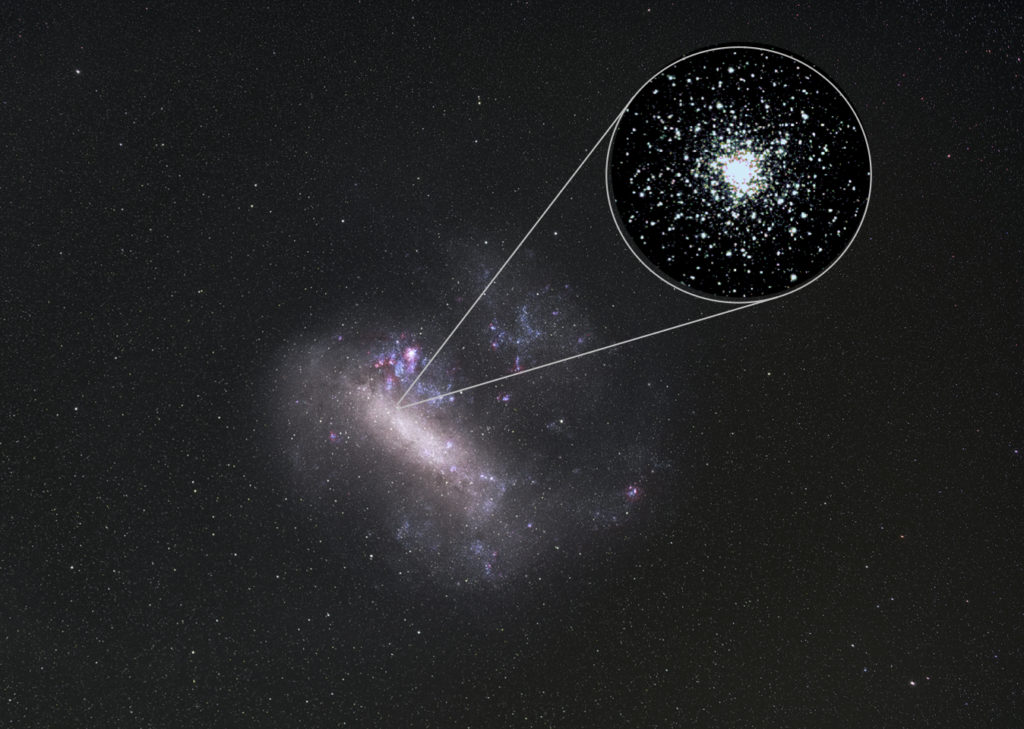
The Large Magellanic Cloud. In the inset: zooming in the globular cluster NGC 2005. Image Credits: A. Mucciarelli / University of Bologna / Italian National Institute for Astrophysics (INAF)
How do galaxies grow? It is well known that large galaxies become larger and larger by accreting small satellite systems. The team has now found evidence that this is true also on small scales, for the satellites themselves. By examining the chemical properties of a sample of 11 globular clusters in the Large Magellanic Cloud (LMC), they noticed that one of those old groupings of stars had a very different chemical composition than the others. Using high-resolution stellar spectra obtained with the ESO (European Southern Observatory) Very Large Telescope and with the Magellan Telescope in Las Campanas Observatory, Chile, the astronomers discovered that NGC 2005’s stars have less silicon, calcium, copper and zinc than any other star in the targeted LMC clusters. By performing numerical simulations, they demonstrated that the peculiar chemical composition observed in NGC 2005 is best explained if this cluster is the remnant of an ancient, small stellar system that was swallowed by the LMC long ago.
“The chemical composition of a star is like its DNA and there is no way to change it” says Professor Alessio Mucciarelli, first author of the study. “Therefore, the chemistry of a star tells us about the genealogy of this star, namely, the chemical composition of the gas from which it formed. Our discovery demonstrates that NGC 2005 was born outside the LMC.”
Donatella Romano, co-author of the study and co-leader of the ISSI/ISSI-BJ team “Chemical abundances in the ISM: the litmus test of stellar IMF variations in galaxies across cosmic time”, performed the numerical simulations. “NGC 2005 must have been born in a peculiar environment, characterized by a low-level star formation rate and by a stellar initial mass function (IMF) skewed against the most massive stars,” she says. “A clear indication in favor of this interpretation is provided by the extremely low zinc abundance of NGC 2005’s stars: zinc is produced mostly by hypernovae that have stellar progenitors 30-40 times as massive as the Sun, or even more. Hence, a low abundance of this element strongly suggests that the formation of its main stellar producers was somehow suppressed or, at least, strongly reduced.”
Reference:
Mucciarelli, A., Massari, D., Minelli, A. et al. A relic from a past merger event in the Large Magellanic Cloud. Nat Astron (2021). https://doi.org/10.1038/s41550-021-01493-y
Preprint in ArXiv.org


